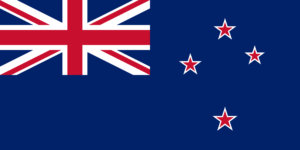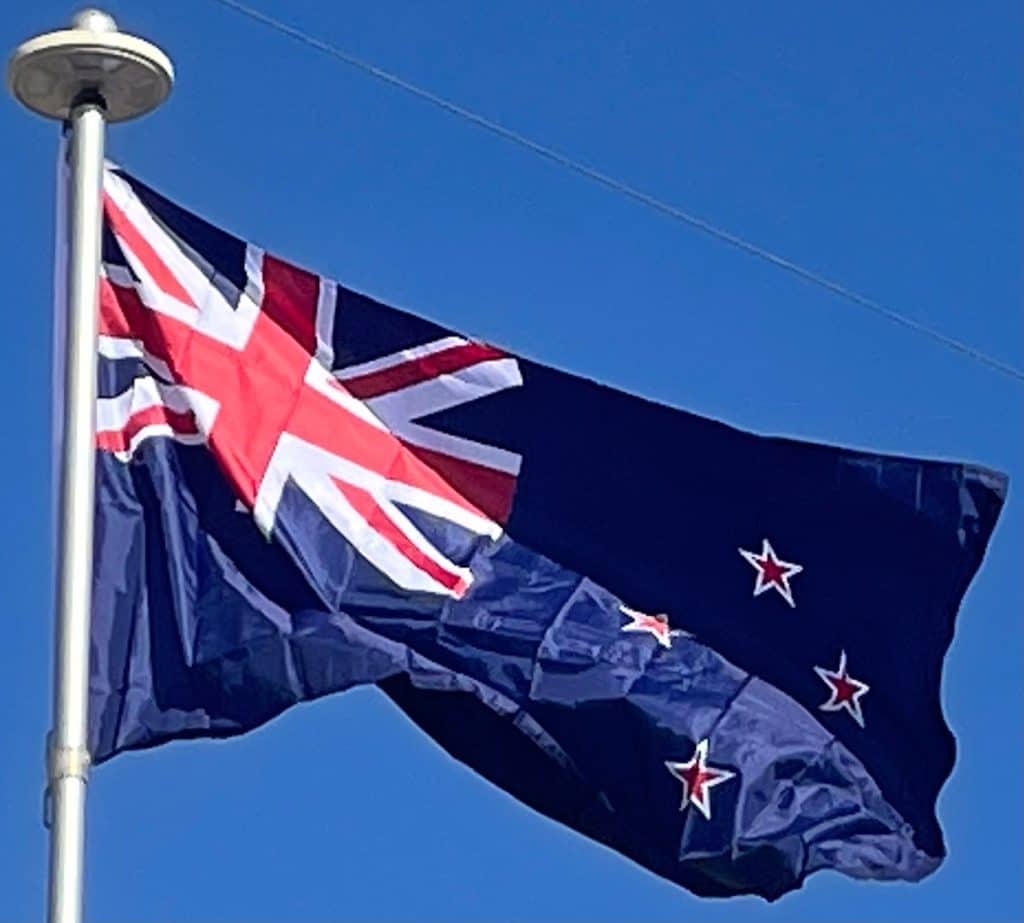
New Zealand’s first flag, the flag of the United Tribes of New Zealand, was adopted in 1834, six years before New Zealand’s separation from New South Wales and creation as a separate colony following the signing of the Treaty of Waitangi in 1840. Chosen by an assembly of Māori chiefs at Waitangi in 1834, the flag was of a St George’s Cross with another cross in the canton containing four stars on a blue field. After the formation of the colony in 1840, British ensigns began to be used. The current flag was designed and adopted for use on the colony’s ships in 1869, was quickly adopted as New Zealand’s national flag, and given statutory recognition in 1902.
For several decades there has been debate about changing the flag. In 2016, a two-stage binding referendum on a flag change took place with voting on the second final stage closing on 24 March. In this referendum, the country voted to keep the existing flag by 57% to 43%.
The flag of New Zealand uses two prominent symbols:
The Union Jack (or Union Flag)
The Southern Cross (or Crux)
In its original usage as the flag of United Kingdom of Great Britain and Ireland, the Union Jack combined three heraldic crosses which represent the countries of the United Kingdom (as constituted in 1801):
The red St George’s Cross of England
The white diagonal St Andrew’s Cross of Scotland
The red diagonal St Patrick’s Cross of Ireland
The Union Jack reflects New Zealand’s origins as a British colony.
The Southern Cross constellation is one of the striking features of the Southern Hemisphere sky, and has been used to represent New Zealand, among other Southern Hemisphere colonies, since the early days of European settlement. Additionally, in Māori mythology the Southern Cross is identified as Māhutonga, an aperture in Te Ikaroa (the Milky Way) through which storm winds escaped.
